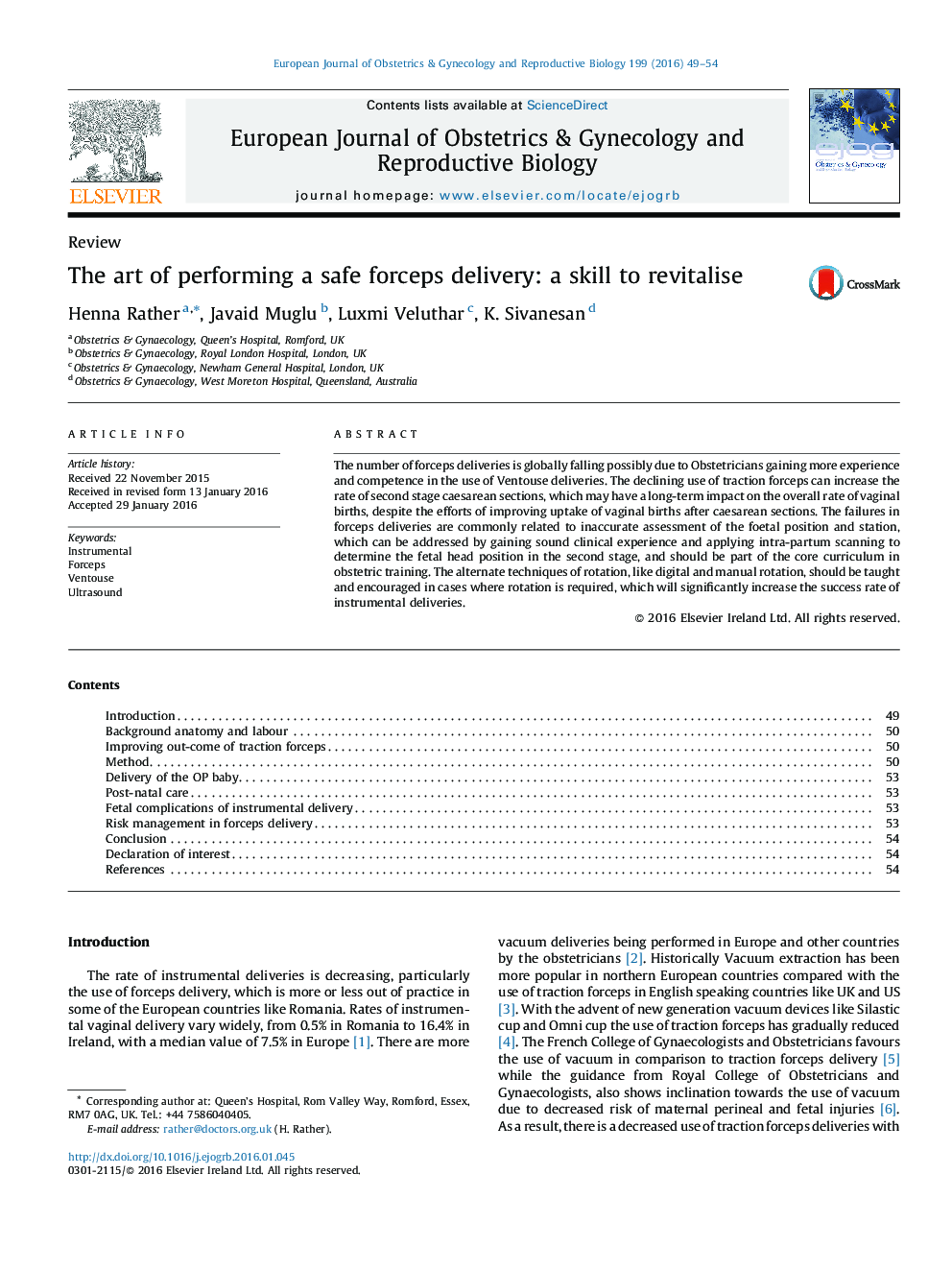| Article ID | Journal | Published Year | Pages | File Type |
|---|---|---|---|---|
| 3919469 | European Journal of Obstetrics & Gynecology and Reproductive Biology | 2016 | 6 Pages |
The number of forceps deliveries is globally falling possibly due to Obstetricians gaining more experience and competence in the use of Ventouse deliveries. The declining use of traction forceps can increase the rate of second stage caesarean sections, which may have a long-term impact on the overall rate of vaginal births, despite the efforts of improving uptake of vaginal births after caesarean sections. The failures in forceps deliveries are commonly related to inaccurate assessment of the foetal position and station, which can be addressed by gaining sound clinical experience and applying intra-partum scanning to determine the fetal head position in the second stage, and should be part of the core curriculum in obstetric training. The alternate techniques of rotation, like digital and manual rotation, should be taught and encouraged in cases where rotation is required, which will significantly increase the success rate of instrumental deliveries.
